A glove-type device that can convert sign language to voice via smartphone will be developed

'Sign language' is a communication tool used by people who are deaf to express and speak various words with the movement of their hands and fingers. However, communication in sign language is limited to those who have acquired sign language, and it is not possible to talk with people who cannot use sign language. So researchers at the
Sign-to-speech translation using machine-learning-assisted stretchable sensor arrays | Nature Electronics
https://www.nature.com/articles/s41928-020-0428-6
Wearable-Tech Glove Translates Sign Language into Speech in Real Time | UCLA Samueli School Of Engineering
https://samueli.ucla.edu/wearable-tech-glove-translates-sign-language-into-speech-in-real-time/
The UCLA Faculty of Engineering has released a movie that shows what kind of gloves are actually in one shot.
Bioengineers AttoBioEngUCLA From AttoUCLA Have Designed A Glove-Like Device That Can Translate American Sign Language Into English Speech In Real Time Though A Smartphone App. Published In AttoNatureElectron . Video Below. Https://T.Co/PdNwKhdZma Pic.Twitter .com/50hBckrULz
— UCLA Samueli Engineering (@UCLAengineering) June 29, 2020
Put on a glove-shaped device, move your finger from the par state, and immediately return to the par...
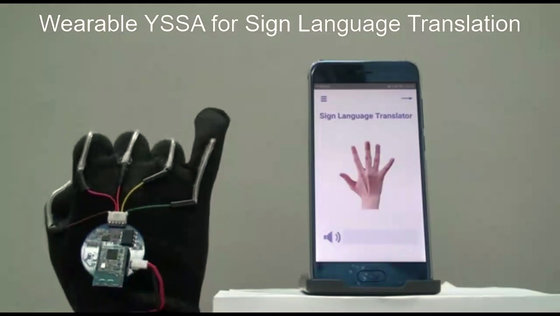
The smartphone utters 'I' with a time lag of about 1 second. The shape of the finger is displayed on the screen. Then move your finger...
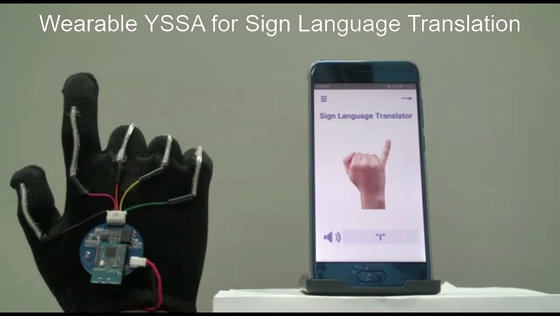
The smartphone says 'L'. I keep the shape of my finger for less than a second, but I can recognize it well.
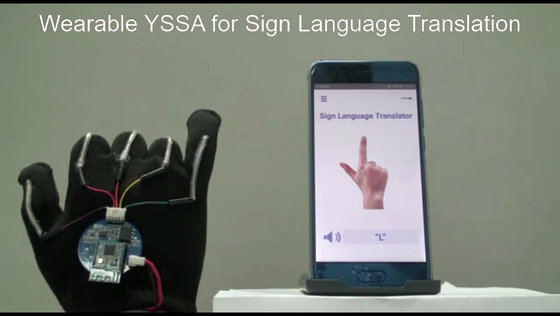
Then, 'Y' is recognized, and finally, when the fingers of 'I', 'L', and 'Y' are moved into a mixed shape...
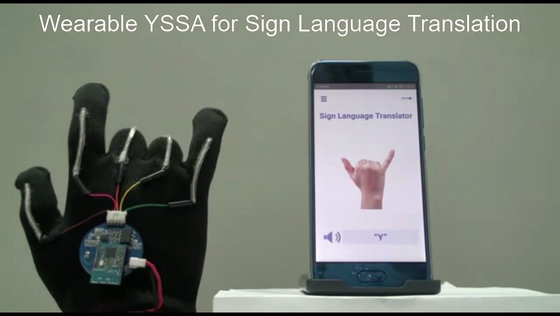
It was expressed as 'I LOVE YOU'. It takes a moment to recognize the shape of your finger, but it seems that there is a lag of about 1 to 2 seconds before the recognition result is displayed on the smartphone and the voice is output.
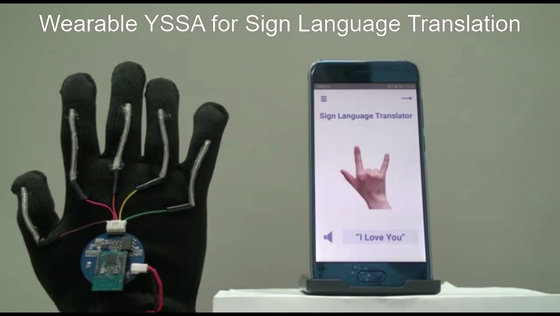
A device that recognizes finger movements looks like this. Devices that can be attached to the hand and read sign language have been developed so far, but because the device size is very large and a high-performance PC is required, it is difficult to apply in daily life. was. However, the device developed by the UCLA research team has a mechanism in which a stretchable sensor reads the movement of the finger and converts it into an electric signal, which is wirelessly transmitted to a smartphone using a circuit board of about 500 yen coins. At the time of article creation, the conversion speed is 1 word per second, but it is lighter and cheaper than the conventional one, and it can be expected to have durability.
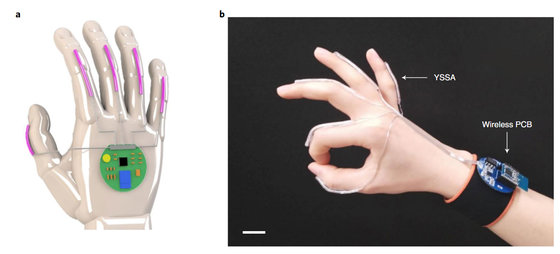
The research team also reported that by adding an adhesive sensor from the eyebrows to the corners of the mouth of the tester, they succeeded in capturing the 'facial expression' that is very important in sign language.
UCLA has already filed a patent for technology on this device. UCLA Engineering Associate Professor Jun Cheng said that more vocabulary (words) would have to be added and translations would have to be faster in order to be commercialized in the future, ``more people are learning sign language. I hope this device helps.'
Related Posts:







